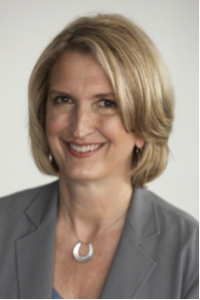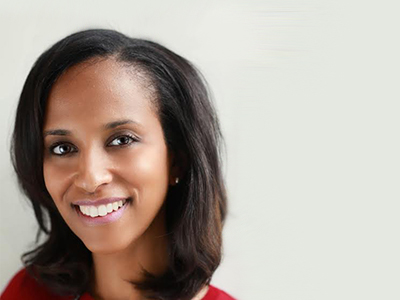 Elisabeth DeMarse is the archetype of a distinguished leader. The current Chair, President, and Chief Executive Officer of TheStreet.com is a pioneer in the field of digital media and information technology, leading the next generation of women by example.
Elisabeth DeMarse is the archetype of a distinguished leader. The current Chair, President, and Chief Executive Officer of TheStreet.com is a pioneer in the field of digital media and information technology, leading the next generation of women by example.
Young Startup
As a deliberate decision-maker with a persistent and insatiable work ethic, DeMarse had the good fortune of knowing, from the beginning of her career, what professional path suited her personality.
“I was co-opted by business early on, by the idea of getting things done,” said DeMarse, who, before delving into business technology, spent her pre-graduate school years working in social reform. First cutting her teeth in public policy after graduating from Wellesley College as a History major, DeMarse served on the Senate Committee on Presidential Campaign Activities (the Watergate Committee), and as an aide for then New York Congressman Edward Koch, following him to City Hall when he was elected mayor. However, the sluggish pace of the life of a public servant, slowed by the bureaucracy of politics, frustrated DeMarse and she sought out the quicker pace of an occupation that matched her industrious temperament.
“Business is so much more interesting than it gets credit for,” said DeMarse, who attended Harvard Business School where she received an MBA in Marketing and Strategy. “I intentionally sought out a career in technology in 1980. I told me classmates, ‘I think this is going to be big’.”
Following graduation DeMarse looked specifically for a tech job, and by determined perseverance landed a staff position on the Operating Committee at Western Union, where she gained valuable insight about engineering, technology, and communication networks. After Western Union and a brief stint at Quotron, an early financial information space, the motivated young professional took a job as head of marketing in the late ‘80s for then up-and-coming company, Bloomberg L.P. With just a couple hundred employees at the time, DeMarse, “employee number 217,” joined Bloomberg during its formative years when the company was a “rocket ship” propelling forward into the new, unchartered territory of digital financial analysis.
Years later, when Michael Bloomberg left the company to pursue the mayoral candidacy, DeMarse –knowing her tenure with politics expired long ago – opted to continue down her forged path of information technology. Coming off of several successful media property creations at Bloomberg, DeMarse was soon recruited by Jeff Cunningham, the iconic Publisher of Forbes, to run the public company iLife.com. As the new CEO, she engineered the turnaround of the sinking business, bringing it back from financial turmoil and rebranding iLife into Bankrate.com. The success of the image change and rapid growth of Bankrate’s shareholder revenue not only secured DeMarse’s fascination with finances and the power of the Internet, but helped solidify the marketing executive as a reputable, prominent, and innovative leader in her field.
Gold Standard
The reputation that DeMarse established help her found another digital financial content company, Creditcards.com, which she eventually sold to her former employer. Moving into the online media profession, she accepted the position of CEO in 2010 of Newser.com. From this news service organization, the digital media expert took over her current job at TheStreet.com, where she has been serving as CEO, Chair, and President for the last two-and-a-half years.
‘I’m liberal arts major who’s succeeded in tech,” DeMarse explained of her own work history, noting the opportunity for women of any educational experience to join the technology vocation. “You don’t need a heavy engineering background in order to succeed, especially in digital media. There is plenty of room for people with strong liberal arts backgrounds.”
For DeMarse, it was a combination of joining the technology industry early on – in the revenue and marketing side – and developing strong leadership skills during the beginning of her career that helped her maintain a long, successful profession. Additionally, she credits her accomplishments to the career-changing advice, wisdom, and knowledge of several influential advisers.
“I had some great, important mentors. Ed Koch, Michael Bloomberg, Jeff Cunningham, Michael Wolff (founder of Newser), and Jim Cramer,” she said. “No one makes it on your own. You need to seek out the best people and learn from them. These folks changed my life. They gave me a chance, and I ran with it. ”
In turn, DeMarse, whom Cramer, co-founder of TheStreet, calls ‘indefatigable,’ seeks to inspire the next generation of women in tech by setting a positive, tangible example.
“Success inspires success. Just by being here, as a female CEO, speaks volumes. I try to mentor, support, encourage and coach all my employees, male or female. I desperately want them all to succeed, to be the best they can be,” she said, stressing that the best advice she can give to young professionals is to place great importance in making smart business choices and operating under fair and honest business practices.
“Life is short, choose how you do business. Is what you are doing fair, accurate, and honest?” DeMarse asked, noting that she takes utmost care to make sure she delivers a good product, maintains excellent customer service, and honest marketing tactics. “It’s important to me to maintain a gold standard.”
After 40 years within the industry, DeMarse, who also currently serves on the Board of Directors of AppNexus Inc., still upholds her gold standard of excellence and places a strong belief in the moral value of work. She continues to find technology a source of growing interests, including her long-time passion for online financial literacy.
Moving Forward
In response to the theory that the media places a heavy emphasis on how women in high-powered positions must struggle to balance home life and work, DeMarse finds, “the whole thing preposterous. The media misinterprets real life, and they are making an issue that’s not an issue.”
She hopes her home/work life situation will eventually set an example for what could be the new norm for professional businesswomen.
“I’m one of the rare people who says ‘you can have it all.’ I don’t know how to cook and don’t know the last time I was in a grocery store, but I love what I do, and have two great children and a great husband.”
Last week, in a keynote speech at a Columbia University’s Journalism School Gala, DeMarse turned off topic to point out that, “Today, journalism schools are over 70 percent female and Columbia’s MS program 76 percent female. Yet we are hopelessly out of synch. Newsrooms linger at 40 percent female. There is a gap is in hiring and promotion. There is a gap is in giving women and minorities a fair chance. Now, let’s discuss the people business journalists are interviewing. Today, in 2014, elite business schools are 35 percent female. Imagine that.”
Recently, DeMarse was recognized by the Girl Scouts of Greater New York as a Women of Distinction honoree for her achievements, leadership and integrity, and inclusion and social accountability within her field. And despite her previous accolades (including: Folio’s Top Women in Media, Working Mother of the Year, Most Intriguing Person in Media, NOW Woman of Power and Influence, and Fast Company Fast 50, among others), DeMarse – a former Girl Scout – felt more personally connected to her recent award and its young audience, as she was able to reunite with her own youthful experiences and visions.
The role model, who inspires “confidence, courage, and character” for intrepid women of all ages, offered a final word of advice, explaining that diverse backgrounds can help open up new possibilities in any career path, in any profession.
“Don’t give up on anything, ever. Be persistent, indefatigable. The idea should be that you do the best job you can all the time and operate at the highest level,” she encouraged. “Furthermore, take on the obligation to make this world a place where women and minorities never experience limits based on their race or gender.”
By Hadley Catalano
 This Week’s Tip Is…
This Week’s Tip Is…



 Seble Tareke-Williams describes her professional path as nontraditional, but each step has been vital to creating her current career, which combines her real estate investing acumen with her passion for community development.
Seble Tareke-Williams describes her professional path as nontraditional, but each step has been vital to creating her current career, which combines her real estate investing acumen with her passion for community development.